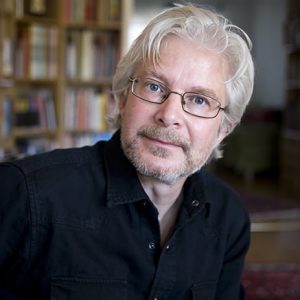 Would it be possible to use brain imaging techniques to detect consciousness and then “read” directly in people’s brains what they want or do not want? Could one, for example, ask a severely brain injured patient for consent to some treatment, and then obtain an answer through a brain scan?
Would it be possible to use brain imaging techniques to detect consciousness and then “read” directly in people’s brains what they want or do not want? Could one, for example, ask a severely brain injured patient for consent to some treatment, and then obtain an answer through a brain scan?
Together with the philosopher Kathinka Evers and the neuroscientist Steven Laureys, I recently investigated ethical and clinical issues arising from this prospective “cerebral communication.”
Our brains are so astonishingly complex! The challenge is how to handle this complexity. To do that we need to develop our conceptual apparatus and create what we would like to call a “fundamental” neuroethics. Sound research needs solid theory, and in line with this I would like to comment upon the conceptual underpinnings of this ongoing endeavor of developing a “fundamental” neuroethics.
The assumption that visualizing activity in a certain brain area can mean reading the conscious intention of the scanned subject presupposes that consciousness can be identified with particular brain areas. While both science and philosophy widely accept that consciousness is a feature of the brain, recent developments in neuroscience problematize relating consciousness to specific areas of the brain.
Tricky logical puzzles arise here. The so called “mereological fallacy” is the error of attributing properties of the whole (the living human person) to its parts (the brain). In our case a special kind of mereological fallacy risks to be embraced: attributing features of the whole (the brain) to its parts (those visualized as more active in the scan). Consciousness is a feature of the whole brain: the sole fact that a particular area is more active than others does not imply conscious activity.
The reverse inference is another nice logical pitfall: the fact that a study reveals that a particular cerebral area, say A, is more active during a specific task, say T, does not imply that A always results in T, nor that T always presupposes A.
In short, we should avoid the conceptual temptation to view consciousness according to the so called “homunculus theory”: like an entity placed in a particular cerebral area. This is unlikely: consciousness does not reside in specific brain regions, but is rather equivalent to the activity of the brain as a whole.
But where is consciousness? To put it roughly, it is nowhere and everywhere in the brain. Consciousness is a feature of the brain and the brain is more than the sum of its parts: it is an open system, where external factors can influence its structure and function, which in turn affects our consciousness. Brain and consciousness are continually changing in deep relationships with the external environment.
We address these issues in more detail in a forthcoming book that I and Kathinka Evers are editing, involving leading researchers both in neuroscience and in philosophy:
- Neurotechnology and Direct Brain Communication (Routledge)




